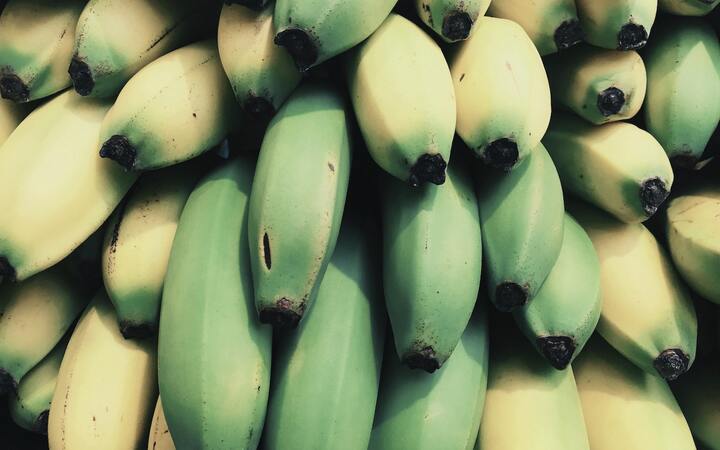Ethylene is the source of a lot of confusion, particularly when it comes to tomatoes. In Tomatoland, Barry Estabrook writes:
An industrial Florida tomato is harvested when it is still hard and green and then taken to a packinghouse, where it is gassed with ethylene until it artificially acquires the appearance of ripeness. But as far back as the 1920s, food scientists had determined that no tomato artificially ripened with ethylene would ever have taste and texture equal to one allowed to ripen naturally.
Now, who can deny that many store-bought tomatoes have a certain similarité to acidic balls of cardboard? And the above passage isn’t wrong, exactly. But still, I think it gives a misleading picture—the situation is more nuanced, and I don’t think ethylene deserves the blame for tomatoes tasting bad.
Ethylene is a plant hormone
Let’s back up. Here’s what we’ve learned about ethylene so far:
- It’s a gaseous plant hormone.
- It has several effects on climacteric fruits like tomatoes, including causing them to ripen and change color.
- The food industry loves to screw around with ethylene. Sometimes this is done to make fruit ripen and sometimes to prevent it from ripening.
Ethylene is commonly used on tomatoes
There are two different ways that ethylene is applied to tomatoes:
- Ethylene gas can be applied to the tomato fruit to ripen it right before selling.
- A liquid precursor to ethylene (ethephon) can be applied to the tomato plant while the fruit is still attached. The purpose of this seems to be partly as a defense against pests, and partly to speed up ripening.
We saw before that liquid ethephon is applied to around 27% of tomato plants in the US. I have trouble finding numbers of ethylene gas, but it’s clearly very common. A special exception allows tomatoes treated with ethylene to still be labeled as “organic”.
It’s easy to get confused about comparisons
Be careful here. Consider four types of tomatoes:
- Fully “table ripened” while on the plant.
- Picked “mature green” and ripened naturally.
- Picked “mature green” and ripened with ethylene.
- Picked “immature green” and ripened however.
It’s abundantly clear that type 1 tomatoes are the best (more nutritious and better-tasting) and type 4 tomatoes are the worst. However, as we’ll see below, there seems to be almost no difference between type 2 and type 3 tomatoes.
This nuance is lost in many popular discussions. Ethylene haters compare the tomatoes in group 3 or 4 against the tomatoes in group 1 and conclude ethylene is worse than natural ripening! Meanwhile, the agricultural industry will compare the tomatoes in group 3 against the tomatoes in group 2, and conclude ethylene is identical to natural ripening!
Both of those statements are arguably correct, depending on what “natural ripening” means.
Ethylene seems to have minimal effect on nutrition
Much of this research is very old. It started with Jones and Nelson in 1930, while the most comprehensive paper I could find was by Kader et al. in 1978. They took tomatoes harvested at various stages, and ripened them either naturally or via ethylene. Here were the measured results:
| picking stage | ripening | pH | soluble solids | vitamin c (mg/100g) | sugar/acid ratio |
|---|---|---|---|---|---|
| table ripe | none | 4.63 | 5.8% | 19.4 | 11.9 |
| mature green | ethylene | 4.48 | 5.3% | 15.5 | 10.1 |
| mature green | time | 4.49 | 5.2% | 12.3 | 10.2 |
| partially mature green | ethylene | 4.40 | 5.1% | 15.5 | 10.0 |
| partially mature green | time | 4.52 | 5.2% | 10.8 | 10.1 |
| immature green | ethylene | 4.42 | 5.3% | 16.2 | 9.5 |
| immature green | time | 4.52 | 5.3% | 9.9 | 9.9 |
As you can see, it’s the picking stage that matters. For a given stage, using ethylene to ripen makes little difference versus just using time. (Except that for reason ethylene seems to produce more vitamin c.)
Ethylene seems to have minimal effect on taste
The same study also had a panel of people rate the aroma and flavor or the tomatoes, with these results:
| picking stage | ripening | fruity-floral aroma | sweetness | sourness | off-flavor |
|---|---|---|---|---|---|
| table ripe | none | 3.1 | 3.3 | 1.8 | 0.1 |
| mature green | ethylene | 2.4 | 2.1 | 3.0 | 2.5 |
| mature green | time | 2.4 | 2.1 | 3.6 | 2.2 |
| partially mature green | ethylene | 2.4 | 2.4 | 3.3 | 2.7 |
| partially mature green | time | 2.7 | 1.9 | 3.7 | 1.7 |
| immature green | ethylene | 2.4 | 2.0 | 4.2 | 1.6 |
| immature green | time | 2.6 | 1.6 | 4.1 | 1.5 |
Again, by basically every measure, table ripe tomatoes are best. The tomatoes that are picked earlier are worse, but it’s not ethylene that’s the problem, it’s the early harvesting. So why not just harvest tomatoes when table ripe? Well:
Harvesting tomatoes table ripe is almost impossible
Now, not all tomatoes are harvested green. But even those that are picked red are picked less than fully ripe. Why? Because it’s impractical to do otherwise. Tomatoes are very delicate, especially when fully ripe. If they were harvested that way, our current methods of picking/loading/transporting them would yield a big rotting mash.
Some tech startups are working on magical robots that will gently pick tomatoes as if by hand. If these worked and were deployed at scale, it would make it cheaper to get true vine-ripened tomatoes to people. But, we’d still need to deal with packaging and shipping, and it would remain difficult to ship ripe tomatoes from Mexico to New York fast enough that they’d still be edible.
TL;DR
Compared to picking tomatoes table ripe, picking them green and using ethylene is definitely worse. But if ethylene gas was banned tomorrow, tomatoes wouldn’t get better: They’d still be picked green because that makes them easier to transport. The only difference is that they’d be ripened with time instead of ethylene—a more expensive way of getting basically the same result.
Hopefully, someday soon technology will change this dynamic. If you want good tomatoes today, some options are:
- Find hand-harvested tomatoes at local farmer’s markets.
- Buy expensive canned tomatoes that were picked ripe, either by hand or by using machinery that punctures the tomatoes during picking.
- Grow them yourself.





